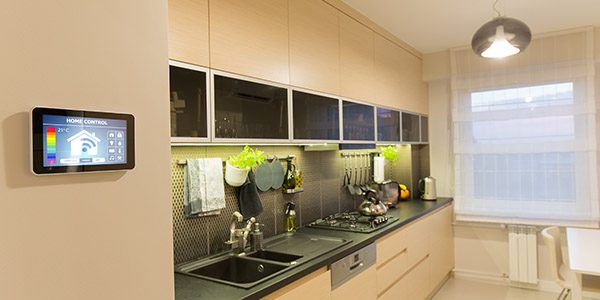How to Make Your Home More Energy Efficient
10 Tips for an Energy-Efficient Home
As the winter weather reaches its height, you may find that your electric, water, and gas bills have skyrocketed. Keeping your home warm when it’s bitter cold outside takes a lot of energy. If you don’t have an energy-efficient home, this means lots of wasted dollars in bills. Making small changes throughout the year can save you lots of money, especially in the winter and summer months when temperatures are at their most extreme. Take the time to look through these tips to make your home more energy-efficient and decide what makes sense for you. Come next winter, you’ll be amazed at how much you save on your utility bills.
Start with an Energy Audit
Before you begin making changes to your home to make it more energy-efficient, you should hire a professional to identify key problem areas. Depending on where you live, look into Energy Star to perform a Home Performance Assessment. Begin by talking to an energy expert about your home and living patterns. Then, review your historical energy use and discuss potential savings with Energy Star. After this, your energy expert will perform a home evaluation, complete with diagnostic tests to identify things like leaks, moisture problems, or ventilation issues. After they have fully assessed your home’s energy performance, your energy expert will provide you with cost-effective recommendations to make your home more energy-efficient.
Replace your light bulbs
Start small by going through your house and replacing your incandescent light bulbs with energy-efficient light bulbs. Compact fluorescent light bulbs save about three-quarters of the electricity used by standard light bulbs. These energy-efficient light bulbs last 90% longer and only use about 27 watts to generate as much light as a 100-watt incandescent bulb. It’s a small task, and it will greatly reduce your electricity usage over time.
Upgrade and insulate your windows
Poorly insulated windows can let cold air seep into your home in the winter. Start by weather stripping all of your windows. If you have single-pane windows, they could likely still let the cold through. You may choose to invest in energy-efficient windows that are Energy-Star rated. These windows are guaranteed to be more energy-efficient and save you money by not letting heat out or cold in. If you are not ready to invest in new windows, purchase energy-efficient curtains. Energy-efficient curtains are thermal-lined and meant to block the sun in the summer and insulate your home in the winter. Once you have your energy-efficient windows, open the blinds to let natural light in during the day to help warm your home.
Insulate your walls and attic
Poorly insulated walls and attics are a huge waste of energy. They let your warm air out and allow cold air in, causing your heating system to work twice as hard. A fully insulated home uses less energy, saving you money. You can either do your insulation yourself or hire a professional. The benefit of a trusted, professional contractor is that they will have tools to ensure that there are no leaks in your insulation. Make sure you find a contractor who will use an infrared camera both before and after their work to ensure your whole house is fully insulated.
Plant trees and shrubs
Add a little bit of energy efficiency on the outside of your home with smart landscaping—plant shrubs close to your home to protect it from wind and snow. On the west side of your home, plant a large tree that will bloom in the spring and summer and lose its leaves in the fall and winter. This way, the tree will protect your home from the sun during the hot summer months and will let the sunshine warm your home during the cold winter months.
Collect rainwater
Looking for another easy way to make your home more energy efficient? Save on your water bill by using a rain barrel. You can either make your own or purchase one from any home improvement store. These rain barrels go at the bottom of your downspouts and collect rainwater for you to use. This water can be used for things like watering your plants or garden, hosing off your pets, or even washing your car. It may seem like such a small thing, but it’s a great way to be more sustainable and save a few gallons of water each week.
Replace old appliances
Old appliances can be incredibly draining on resources, especially large appliances like refrigerators or your washer and dryer. If these items seem to be eating up too much electricity, it may be time to replace them. Look for energy-efficient appliances that are Energy-Star rated. If you aren’t ready to get rid of your appliances, look for ways to decrease their use of resources. Turn your refrigerator to its energy-efficient setting. When doing laundry, avoid using the “hot” setting and instead opt for cold or warm water. If it’s nice outside, try to hang your clothing up to air dry instead of throwing it in your dryer. Once it’s all dry, you can throw it in for about 5 minutes to reduce wrinkles and add softness.
Turn down your water heater
To save on energy, turn your water heater down to its warm setting (120°F). Your water heater should not exceed 140°F. Take the time to insulate your hot water lines as well. This will help avoid them from cooling down too quickly between uses. Lastly, install low-flow fixtures to baths and showers to avoid waste. To reduce water usage in your toilet, place a brick in the tank to increase water levels.
Replace your furnace
If you live in an older home, you may want to consider replacing your furnace, as older versions waste a lot more gas. By replacing your old furnace with a high-efficiency condensing furnace, your gas bill will become significantly less expensive. Look for a furnace with an annual efficiency of at least 90%, which means it only wastes about 10% of the natural gas. Depending on what type of furnace you are switching from, you can save over 25% on your gas bill by changing to a high-efficiency condensing furnace. If you aren’t ready to replace your furnace, there are also smaller things you can do to reduce your utility bills. Start by changing the air filters. Getting rid of dirty filters allows air to circulate easier and takes some workload off of your furnace. To save even more money, go around your home and close vents in any rooms that are often unused. There’s no sense of heating up a room that nobody will be in.
Take advantage of tax incentives
Depending on which upgrades you make to your home, you may be eligible for federal tax incentives. Check energy.gov to see if any improvements you’ve made to make your home more energy efficient are included in these incentives.
Now it’s time to take these tips on how to make your home more energy-efficient and get started! If it seems overwhelming, start small with tasks like replacing light bulbs or changing filters. Every little bit will lead you to a more energy-efficient home and less expensive utility bills. Plus, the earth will thank you for it! For more tips for enjoying your home, sign up for our monthly blog newsletter.






